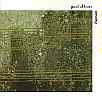As a mastering engineer, my job allows me to hear more final mixes than most people: from big budget to no budget, country to gothic, analog and digital. I feel the disparity between professional- and amateur-sounding recordings isn't rooted in technology, but basic audio knowledge. The most glaring examples I consistently hear are poor recording of drums and bass, resulting in muddy, undefined low to low-mid sound.
Great recordings start with properly capturing a strong rhythm section performance. Following are a few rhythm section tips that will go a long way toward getting better final mixes - and they don't even require purchasing any new gear!
The best drum kit sounds I've heard are done with three mics: a well-placed overhead stereo setup and one in the bass drum (if you're a Type A personality, go ahead and mic the snares). Then, to control transients, use a quick, transparent limiter for the overheads.
This setup offers a few key advantages over the "close-mic every drum" approach:
It's ironic that in modern pop recordings - where anything is possible - it's rare to find instruments actually recorded in stereo. This is the most critical aspect for achieving a "big" sound, as true stereo gives a sense of depth and cues to spatial direction. The sonic characteristics created by a well-tuned drum kit in a good room cannot be replicated with individual drum miking, panning and reverb processing. In fact, everything that is applied to an audio signal slightly destroys its integrity. So, after you individually mic each drum, equalize it and add reverb, you're down a few notches on the sonic evolutionary ladder and still don't have the depth and power of a stereo-tracked drum kit
The key is perception. Think of the entire drum kit as one instrument. The goal is to capture its power and timbre. If you were recording an acoustic guitar, how would you do it? Simple: start with a mic (or a stereo mic setup) and add a pickup for a bit of effect (if required/preferred). Miking drums shouldn't be any different. To me, individually miking each drum in a kit is akin to isolating each string of an acoustic guitar to a separate track and then trying to re-create its sound by mixing, panning and adding reverb to those strings. You lose the overtones and richness of the instrument's sound as it develops in an acoustic environment: in short, its character.
With bass, the goal is a sound that's consistent throughout the instrument's range, while controlling some of the runaway lower frequencies that can be problematic in a mix. For starters, it takes a player with a good "touch," quality instrument, and preamp/amp. But even with that, the bass's sonic characteristics can be a bit unpredictable. One useful solution is to apply low-ratio compression (1.3 to 1.7:1) with a high threshold (-25 to -30). This helps smooth out the sound and brings up the less audible frequencies slightly, without changing the instrument's basic timbre. The result is a tighter, more controlled bass (the degree of which can be manipulated by the ratio and threshold) that needs less tweaking and sits better in the mix. And it works whether you record using a direct signal, miked cabinet, or a combination of both.
When drums and bass are well-recorded, you'll find they naturally sound clear and powerful throughout their entire range. If signal processing (light or heavy) is required for a specific flavor, it will be more effective after laying a strong foundation. And after the rhythm section is established, other instruments sit better in the mix, and sound more distinct due to less clutter occupying the sonic landscape. The end result is more sonic impact - and that's a good thing no matter what genre of music you record.
Paul Abbott has been playing and amplifying acoustic guitars since 1988. He has recorded several CDs (both solo and with bands), composes and performs his own works for solo acoustic guitar, and experiments in computer composition.
